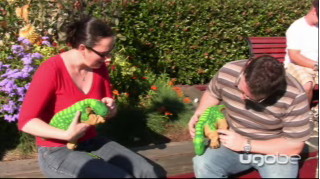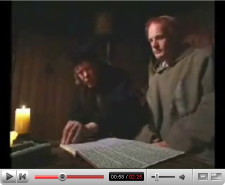Last night we watched Jurassic Park 3 and today found you can have a little dinosaur all of your own!
 Sony have robot dogs, Phillips robot cats (albeit stuck sitting in one place) but Ugobe have little robot dinosaurs called Pleo. In the videos they do move like little baby creatures and the lady in the shopping mall coos over one as she strokes it.
Sony have robot dogs, Phillips robot cats (albeit stuck sitting in one place) but Ugobe have little robot dinosaurs called Pleo. In the videos they do move like little baby creatures and the lady in the shopping mall coos over one as she strokes it.
Central to Pleo seems to be:
 embodiment – they feel through 40 sensors and move in their environment
embodiment – they feel through 40 sensors and move in their environment- emotion – they have a relatively complex model of basic drives rather like Cynthia Breazwal describes in her book “Designing Sociable Robots“.
This seems to pay off in people’s reactions, both on Pleo’s own videos (well they would!), but also in owner’s plogs (sic) … one owner says:
“she acts just like a cat concerning keyboards.. just crawl on the darn thing while I’m typing! I know Penny,. you’re so cute it doesn’t matter what you do. But you should have a little sensor strip in your butt to spank when you’re bad1 or to pat gently to urge you to go explore. Go to sleep my little love” ArcticLotus
For researchers there is an open architecture so it should be possible to play oops experiment with them 🙂 The API doesn’t seem to be published yet, so wait until you get your cheque books out!
- This could get us into the territory of agent abuse![back]



 that you see in trees outside hotels and in city centres throughout the year; what if you could turn those into a display?
that you see in trees outside hotels and in city centres throughout the year; what if you could turn those into a display?
